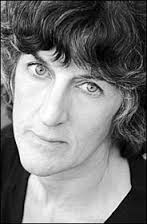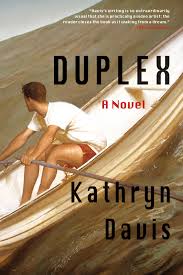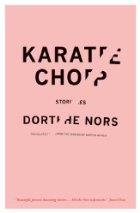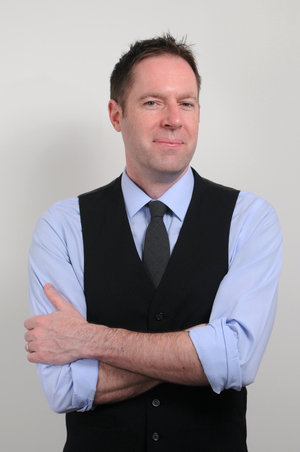The Writing Life: An Interview with Kathryn Davis

 Editor’s Note: Kathryn Davis’ new novel Duplex (Graywolf Press) took us on a surreal, mind-bending journey, so we couldn’t resist picking her brilliant brain a bit more. Read our full review of the book here, and catch Davis tomorrow night at Magers & Quinn Booksellers for a reading with Eric Lundgren.
Editor’s Note: Kathryn Davis’ new novel Duplex (Graywolf Press) took us on a surreal, mind-bending journey, so we couldn’t resist picking her brilliant brain a bit more. Read our full review of the book here, and catch Davis tomorrow night at Magers & Quinn Booksellers for a reading with Eric Lundgren.
Hazel & Wren: What are your most productive writing habits/rituals?
Kathryn Davis: A regular routine—what Flannery O’Connor called “the habit of art”—is essential. I write every day; the weekends are optional. What interests me about my routine is how the specific details of it vary from book to book, and how the books, formally, echo the routines. I worked in big long blocks of time (without breaks) when I was writing The Girl Who Trod on a Loaf, a book with big long paragraphs. Versailles is made up of many small, discrete parts; I tended to get up and down quite a lot while I was writing it. I wasn’t jumpy writing Duplex. I sat and concentrated hard. But I also needed to take a break between the morning shift and the afternoon shift, a kind of generative gap that—at least to me—replicates the transition between chapters.
H&W: Which writers and/or artists have most influenced your own writing?
KD: I love that this question includes artists of all kinds and not only writers. The list of artists who have had the greatest influence on my writing would have to include Virginia Woolf, Lewis Carroll, Federico Fellini, Franz Kafka, W.B. Yeats, Isak Dinesen, the ghost stories of Elizabeth Bowen, Mozart’s operas, Henry James, Ingmar Bergman, Max Beckmann, Colette, the murder mysteries of Colin Dexter and P.D. James and Henning Mankell, Barbara Pym, Lotte Lenya, Giotto. OK. I have to stop now…
H&W: When you are creating a new world for a book like Duplex, do you first map out the world, and then figure out the story? Or do you find yourself writing the story first, and the world fills itself in as you go along?
KD: I can’t begin writing a book until I have a very strong sense of the world I’m about to enter, writing it. “Sense” is the operative word here: with Duplex I knew that the world I was about to enter was going to resemble, in some ways, the world I grew up in, but I also knew it was going to be like that world with bites taken out of it, and that the only way I was going to understand where those bites were and how many of them there were and how big or small they were would be by starting to write. The act of writing, then, is the act of mapping.
H&W: You do an excellent job of capturing everyday life and combining it with very surreal sci-fi elements for a mind-bending effect. What most interests you about writing in that place of juxtaposition?
KD: That place of juxtaposition is, for me, about as accurate an approximation of the world we live in as I was able to create. I wanted this book to be “true to life”—which of course isn’t the same as the kind of “reality” you find on reality TV. I’ve always been very fond of the saying: “there’s more here than meets the eye.”
H&W: The surreal elements of Duplex creep up on the reader, and things can change in a second. Were these transitions easy to flow through as the writer, or did you spend a lot of painstaking time working to make them seamless?
KD: I’m in the process of writing a short essay on the subject of transitions. Given the way many of my books are constructed—with what I hope is deep narrative drive, despite the fact that I don’t always rely on a linear plot line—the transitions between the various elements (sentences, paragraphs, sections, chapters) become crucial. The reader is invited to enter into and engage imaginatively with these places of transition, arriving at a sense of what—in the absence of literal description—they contain. I think of the act of creating transitions in prose in musical terms. For me it’s one of the most challenging and exciting parts of writing a book.
H&W: How did you handle mapping out (or keeping track of) the timeline for yourself as you were writing the book?
KD: I tend to avoid outlines. I don’t like doing too much planning. But I also want to make sure that all the parts of the world I’m busy creating hang together. A controlled temporal element is critical to a reader’s enjoyment, I think. If I hadn’t been the author of this book, I would have taken pleasure in hearing Mary ask the sorcerer “Weren’t we in some bathroom together before?” and recalling that earlier scene in the restaurant bathroom. I maintain an evolving timeline for a book on index cards.
H&W: In this story, duplexes have magical qualities. What is it about the duplex of our world that inspired you to give it such a prominent part of this book?
KD: I’ve lived in a lot of duplexes. The house I grew up in was a duplex. The house we used to stay in at the shore was also a duplex. The building I live in when I’m teaching in St. Louis is a duplex. The very thin line that separates one set of lives from another set of lives—or one life from another, or one world from another, or one part of a body from another—fascinates me. I remember being amazed that the back of the medicine cabinet in the bathroom of the house I grew up in was also the back of the medicine cabinet in the house attached to ours, and that there was a slot in the back wall for used razor blades, and that Mr. Rice’s used razor blades dropped into the same dark hole as my father’s used razor blades. Needless to say sound traveled freely (though sometimes garbled) through these portals. When you think about it it’s not all that different, really, from the magical process whereby an exalted image can take shape in the mind while the brain meanwhile is busy channeling blood.
H&W: In the book we hear from multiple protagonists (Miss Vicks, Mary, an unnamed first-person narrator who relays Janice’s stories). What advantages (or disadvantages) come with using multiple points of view to tell a story?
KD: There’s an omniscient narrator—the covert yet omnipresent “I” who crops up on page one—to act as a conduit for all those other sensibilities. The advantage, for me, is that this method of narrating seems most hospitable to the creation of a large and multi-faceted world. It’s the most godlike approach, going on the assumption that the creator finds every object of her creation worthy of what seems like—ironically enough—her undivided attention.

 Duplex by Kathryn Davis (Graywolf Press 2013)
Duplex by Kathryn Davis (Graywolf Press 2013)
Kathryn Davis’ newest novel (just released September 3rd!) captured me completely in its surreal tentacles of imagination and craft. According to a Q&A with Davis that I received from the publisher, the novel started as her stab at the Italian fairy tale, “Body-without-Soul.” The tale is one of the 200 folktales that Italo Calvino pulled together for his book, Italian Folktales, which seems fitting, as I was reminded of Calvino often during my reading of Duplex. There are many elements of dark fairy tales in Duplex, with Alice’s Adventures in Wonderland-esque rabbits, creepy characters such as The Sorcerer (who gathers souls in exchange for promises), and much of the murky, horrific tendencies of original folk tales.
The novel follows two young friends in love who grow up on the same street: Mary and Eddie. We follow a tangled and never-linear path of their lives, their separation, and the changes of the street on which they grew up together and fell in love. The book spans from childhood to death, with fuzzy glimpses into the past and future beyond their lives.
In addition to the fairy tale elements, the whole tone of the book is surreal. Moments bleed from normal suburban life into sci-fi robots without warning or occasion. Davis asks us to trust her, but doesn’t wait for us to answer before she’s off in the world of Duplex, and we’re left to pick out her path as we are able. It’s not for those out to find a quick and easy read, but for those of us not afraid to lose control and maybe get a little bit lost, it’s a rollicking adventure.
The dreamlike and bizarre mesh with the daily fabric of what we know of as life with what Davis refers to as “hinges,” or moments where an alternate storyline or universe takes over, or happens simultaneously. In the aforementioned Q&A, Davis talks about these as the crux of the story. Here is one such moment, when one of our main characters, Mary, discovers this hinge into an alternate space:
The lights outside brightened and went out; a car door slammed and as it did Mary felt a latch inside herself beginning to release. It was the smallest of latches but eventually she managed to force it open, not unlike the way she’d felt a million years ago letting out the baby. The chain of clouds strung around the ocean began to break into pieces. Everything was dividing into pieces to keep the parts clear. The heavens, the earth, the underworld—human beings have always needed divisions like that to know where they are and where they’re going.
In addition to hinges like the one Mary discovers, there are more metaphorical hinges: the duplex itself serves as a hinge between realities and parallel stories. While we largely follow Mary and Eddie’s lives, each of the supporting characters are also treated with the same love and attention as the main characters, thanks to a writer who creates fully dimensional characters all-around. It is Davis’ gorgeously crafted character work that holds the center of this story.
One of the most interesting characters for me is Janice, an outside narrator telling many of the folk tales that happen within the book. She’s almost a prophet — foreshadowing, warning, and keeping the history alive. An older girl who will tell stories to any of the gaggle of younger girls who follow her about, she is many things. Lonely or role model? Liar or the only truth-teller in the book? We’re introduced to Janice as such:
Generally speaking the adults on the block considered her a liar. She said her mother beat her with a willow branch and she had stripes on her back to prove it. She said humans had been right when they said the world was flat and round like a coin and you could fall of the edge. Many things everyone had been told weren’t real turned out to be real. The world had edges but you couldn’t see them going, only when you were trying to come back. Janice also said she had a brother who died of leukemia and that, amazingly enough, turned out to be true. Like everyone else, she could push buttons on a console and find out whatever she wanted to know about anybody or anything. For this reason she kept everything exceptional about herself hidden.
An un-named alternate narrator follows Janice throughout the span of the book, as they, too, get older like Mary and Eddie. Janice passes on her own folktales to the group of younger girls, as they listen with awe. Time and truth are stretched and distorted with Janice’s stories (or, rather, history lessons), that confuse and at other times reveal the true timeline and losses of this love story.
The intense attention to character and the fluid sense of timeline, sprinkled with elements of sci-fi, folktale, and mystery all add to the mesmerizing web of Duplex. What authors snare you with their fantastical imaginations? Are there writers that you think do an exceptional job of writing modern-day fairy tales?
(P.S. Davis will be reading at Magers & Quinn next Wed with Eric Lundgren. Stay tuned for an interview with Davis soon on The Writing Life!)
The Writing Life: An Interview with Dobby Gibson
Editor’s Note: We’ve long been admirers of poet Dobby Gibson, thanks to his witty and humanly vulnerable approach to his art. You can imagine how tickled we were when he agreed to be one of our two featured readers for next week’s Words at WAM open mic at the Weisman Art Museum (co-presented by WAM Collective and yours truly). If you haven’t encountered his work, we strongly urge you to check out his newest collection of poems, It Becomes You, from Graywolf Press (you can read Wren’s review of it here). We hope you enjoy this teaser of an interview with Gibson as much as we do. See you next week at Words at WAM!
Hazel & Wren: Who is an author that continuously surprises you?
Dobby Gibson: If you mean “continuously surprises” in a good way: Mary Ruefle.
H&W: E-reader or book?
DG: Both. Very few poetry titles are available on e-readers, so I still experience poetry primarily via codex. And for general around-the-house reading and perusing, I definitely prefer the book-as-object. But for traveling, I go with an e-reader. I travel a lot for work, and the way I pack has an entire methodology. I have highly defined ideas about global voltage converters alone.
H&W: What books are stacked by your bedside table (or your equivalent) right now, waiting to be read?
DG: Joan Mitchell: Lady Painter, a terrific biography despite the galling title. And Ex-Voto, a book of poems by Adelia Prado.
H&W: Which authors and/or teachers have most influenced your writing? How so?
DG: I write in a genre that I never studied formally in school. I took one poetry workshop in 1997 and found it to be waste of time. So my “teachers” have all been other poet-friends. Last week I had a great conversation with local poet Steve Healey at the State Fair that helped me realize things about poetry. Children of America, skip school and go to the State Fair with Steve Healey!
H&W: Most productive place for you to write (physically and/or mentally)?
DG: You know how some authors’ book-jacket biographies say things like: “He divides his time between New York and Maine,” or “She splits her time between Berkeley and Colorado”? I split my writing life between the Dunn Bros. on East Lake Street and the Blue Moon Coffee Shop on East Lake Street. I’ve written two books in those shops — while being subjected to the sight of way too late-middle-aged men in cycling shorts on Saturdays. What is it about wearing those shorts in public that immediately requires a hot cup of coffee?
Psst: Check out this gorgeous MotionPoem of Gibson’s poem, “The Painter,” animated by Mark Rubbo. It’ll make your day.







